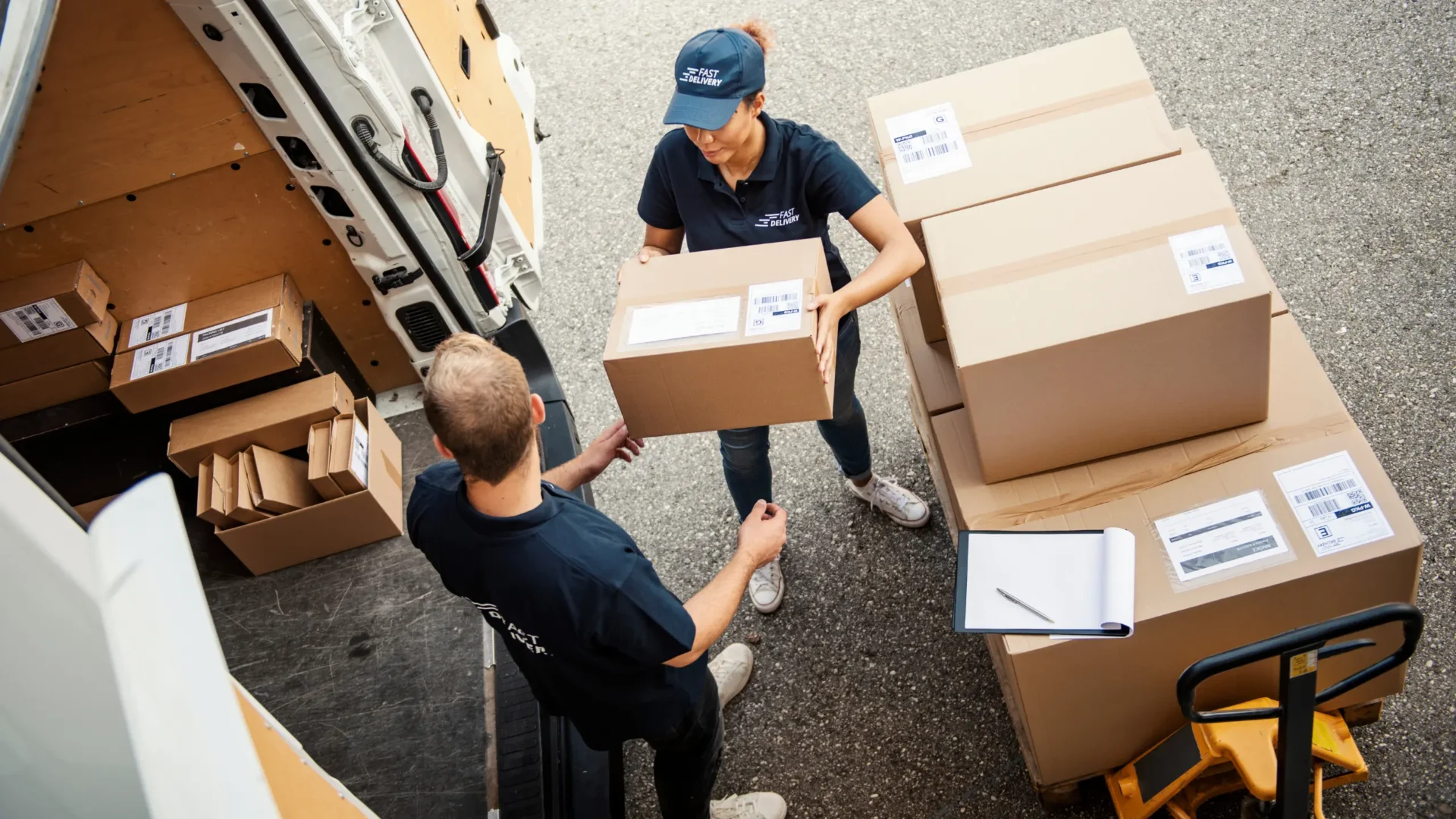
Harness the power of AI, Machine Learning, and Generative AI to optimize their supply chains, streamline transportation processes, and make data-driven decisions that reduce risks and improve overall performance.
By leveraging our deep industry knowledge and cutting-edge AI expertise, we ensure that your logistics operations don’t just adopt AI – they thrive with it. Our solutions are designed to integrate seamlessly with your existing systems, providing immediate value and long-term scalability.
Predictive Route Optimization
Smart Inventory Management
Automated Demand Forecasting
How AI supports logistics industry
Cost Reduction and Increased Efficiency
Optimized routes lead to lower fuel consumption and reduced vehicle maintenance expenses, while improved inventory management minimizes carrying costs and waste. The automation of repetitive tasks cuts labor costs, allowing human resources to focus on higher-value activities.
Enhanced Customer Satisfaction and Decision Making
Providing more accurate delivery time estimates, improving order accuracy, and enabling faster response to inquiries through AI chatbots and automated systems lead to better customer satisfaction.
Improved Visibility, Transparency, and Risk Mitigation
Real-time tracking of shipments and inventory, coupled with end-to-end supply chain visibility, ensures that all stakeholders are kept informed through automated updates. This transparency goes hand in hand with improved risk mitigation.
AI systems can detect potential supply chain disruptions early, improve the ability to respond quickly to unexpected events, and ensure better compliance with regulations through automated monitoring and reporting.
Sustainability
AI contributes significantly to sustainability efforts by reducing carbon footprints through optimized routes and improved resource utilization, minimizing waste, and helping companies meet and exceed environmental regulations and standards.
AI solutions in logistics:
Implementation challenges
Implementing AI technology in logistics requires substantial investment in hardware, software, and infrastructure, which can be financially burdensome for many companies.
To mitigate these costs, businesses can explore phased implementation strategies, starting with pilot projects that require lower initial investment.
Additionally, leveraging cloud-based AI solutions can reduce the need for extensive on-premise infrastructure, allowing companies to scale their AI capabilities more cost-effectively over time.
Limited access to relevant data and the presence of data silos can significantly hinder the effectiveness of AI in logistics.
Organizations need to invest in robust data governance frameworks and infrastructure that facilitate seamless data sharing across departments.
By ensuring that high-quality, comprehensive data is readily available, businesses can enhance the performance of their AI systems and improve decision-making processes.
Departments within logistics often operate in isolation, resulting in poor communication and limited data sharing. This siloed approach can significantly hinder the effectiveness of AI, as integrated data is essential for optimal analysis and decision-making.
To address this challenge, organizations can engage AI consultants with industry experience who specialize in breaking down these silos.
These experts can facilitate cross-departmental collaboration and promote a culture of data sharing, ensuring that all relevant information flows seamlessly across the supply chain.
By unlocking the value of integrated data, companies can enhance the accuracy of their AI models and improve overall operational efficiency.
Outdated technologies and rigid infrastructure can complicate the integration of AI solutions into existing logistics operations.
To address this, companies should prioritize modernizing their IT infrastructure, which may involve phased upgrades or adopting hybrid systems that allow for the integration of new AI technologies with legacy systems.
This strategic approach ensures compatibility and maximizes the benefits of AI without completely overhauling existing processes.
A lack of buy-in from stakeholders can lead to resistance against AI initiatives, undermining their success.
Effective communication and education about the benefits of AI are crucial to securing stakeholder commitment. Involving stakeholders in the planning and implementation phases can foster a sense of ownership and alignment with the organization’s AI strategy, ultimately leading to smoother adoption and integration of AI solutions.
The most popular AI solutions in logistics include:
AI-powered demand forecasting methods can reduce error rates significantly compared to traditional forecasting techniques. Improved demand prediction accuracy allows manufacturers to optimize vehicle dispatches, warehouses to reduce holding costs, and customers to avoid stockouts.
Artificial intelligence helps analyze demand in real-time so organizations can dynamically update supply planning parameters to optimize supply chain flow. Dynamic supply planning minimizes waste and uses fewer resources.
Automated warehouses utilize AI and robotics to substitute human tasks. Amazon and other large retailers have adopted this technology to enhance speed and efficiency in their operations.
Computer vision AI can interpret vehicle environments, read barcodes automatically, detect stock locations in real-time, and prevent safety violations. This technology significantly improves human driving capabilities.
Generative AI can automatically generate reports, summaries, and other content formats, facilitating quicker decision-making and improving communication within logistics operations.
This feature is particularly beneficial for managing large volumes of data and extracting actionable insights from it.







